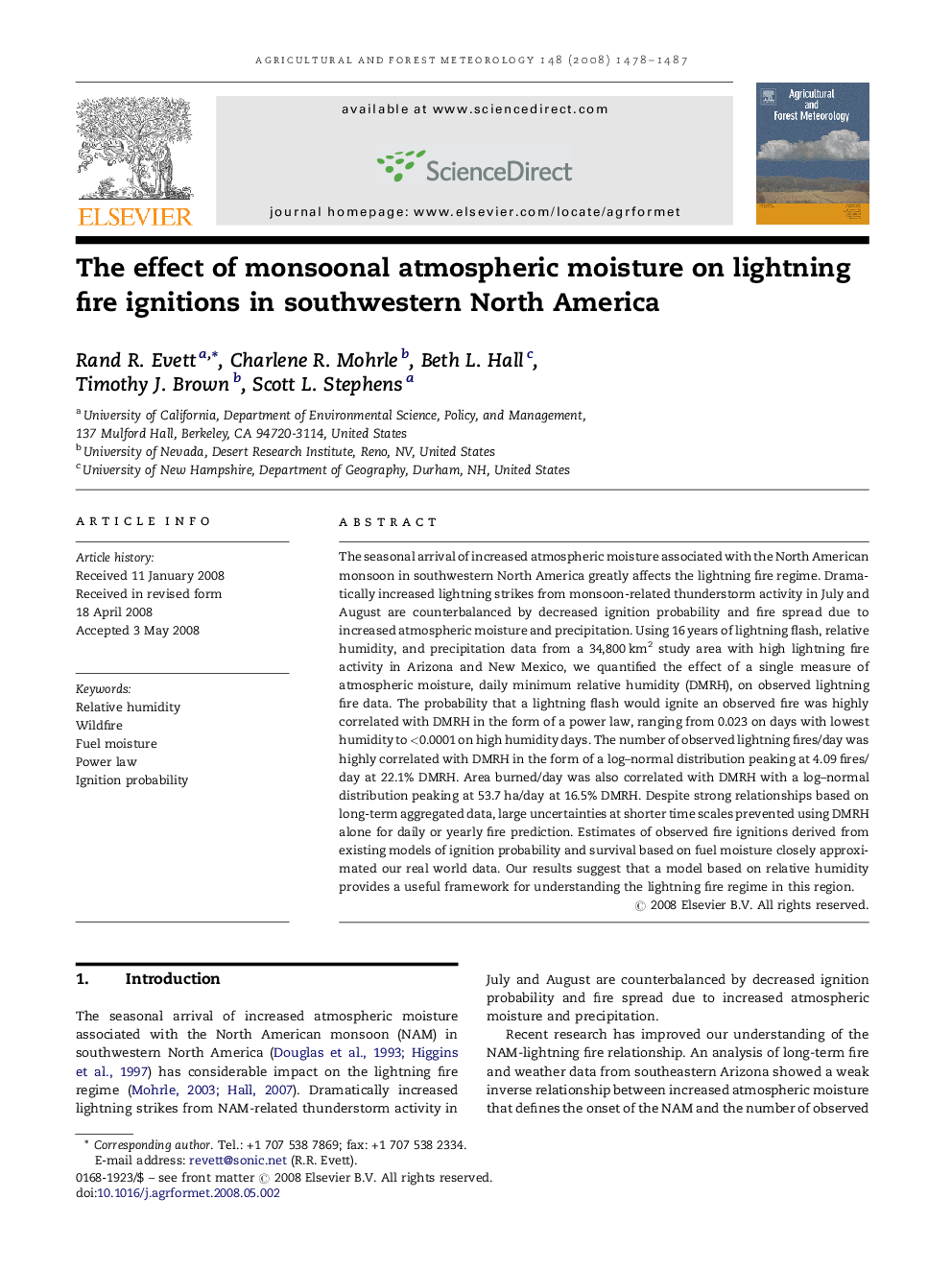| Article ID | Journal | Published Year | Pages | File Type |
|---|---|---|---|---|
| 82576 | Agricultural and Forest Meteorology | 2008 | 10 Pages |
The seasonal arrival of increased atmospheric moisture associated with the North American monsoon in southwestern North America greatly affects the lightning fire regime. Dramatically increased lightning strikes from monsoon-related thunderstorm activity in July and August are counterbalanced by decreased ignition probability and fire spread due to increased atmospheric moisture and precipitation. Using 16 years of lightning flash, relative humidity, and precipitation data from a 34,800 km2 study area with high lightning fire activity in Arizona and New Mexico, we quantified the effect of a single measure of atmospheric moisture, daily minimum relative humidity (DMRH), on observed lightning fire data. The probability that a lightning flash would ignite an observed fire was highly correlated with DMRH in the form of a power law, ranging from 0.023 on days with lowest humidity to <0.0001 on high humidity days. The number of observed lightning fires/day was highly correlated with DMRH in the form of a log–normal distribution peaking at 4.09 fires/day at 22.1% DMRH. Area burned/day was also correlated with DMRH with a log–normal distribution peaking at 53.7 ha/day at 16.5% DMRH. Despite strong relationships based on long-term aggregated data, large uncertainties at shorter time scales prevented using DMRH alone for daily or yearly fire prediction. Estimates of observed fire ignitions derived from existing models of ignition probability and survival based on fuel moisture closely approximated our real world data. Our results suggest that a model based on relative humidity provides a useful framework for understanding the lightning fire regime in this region.
